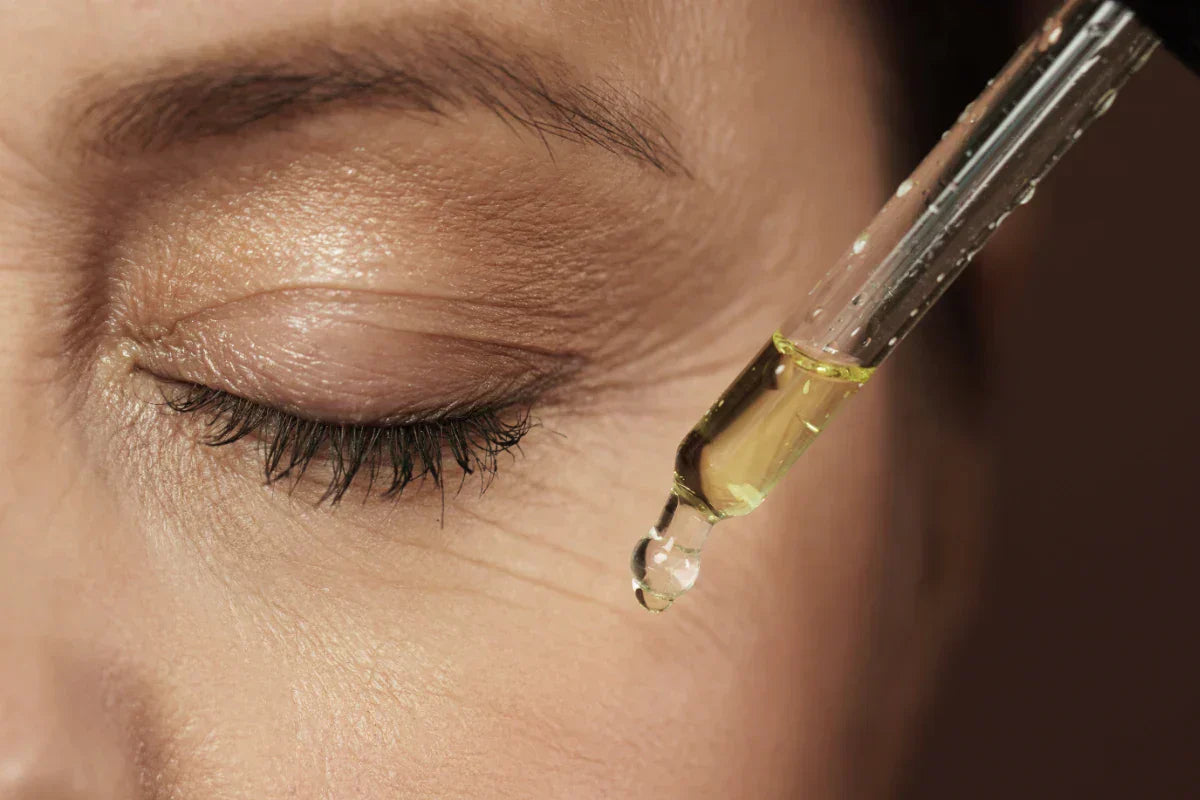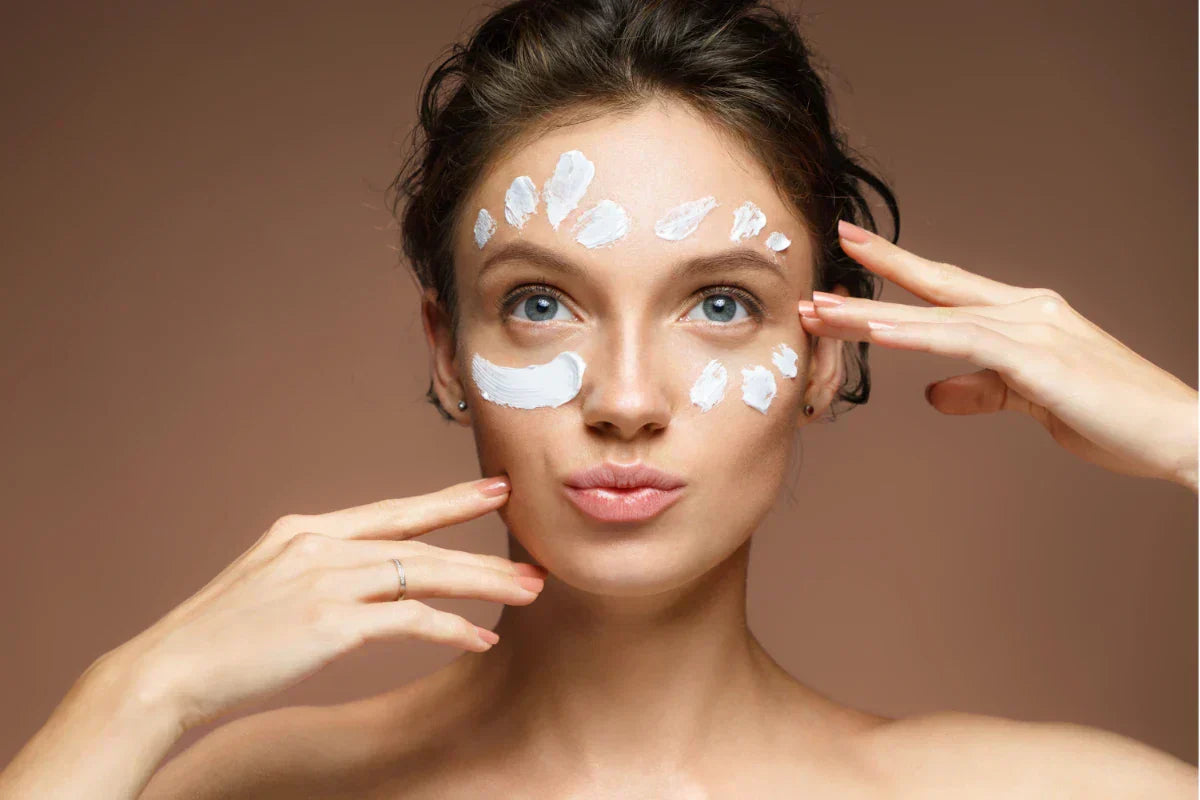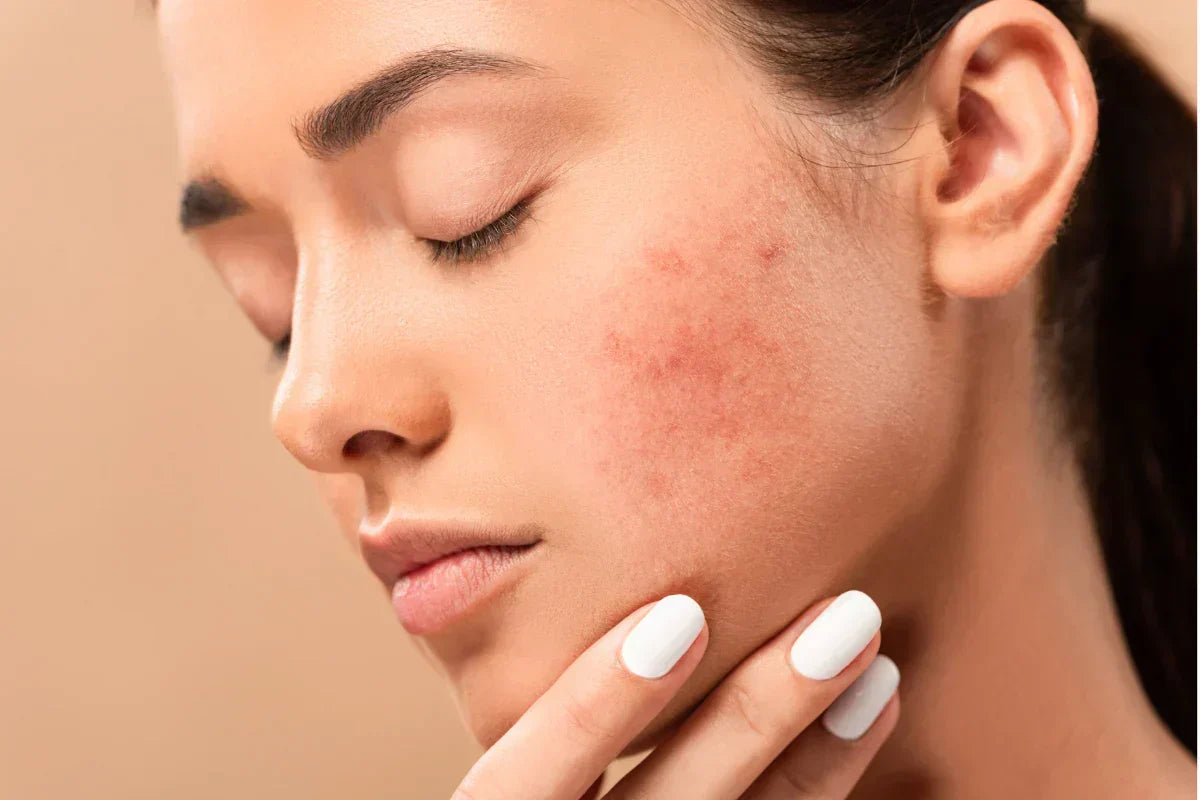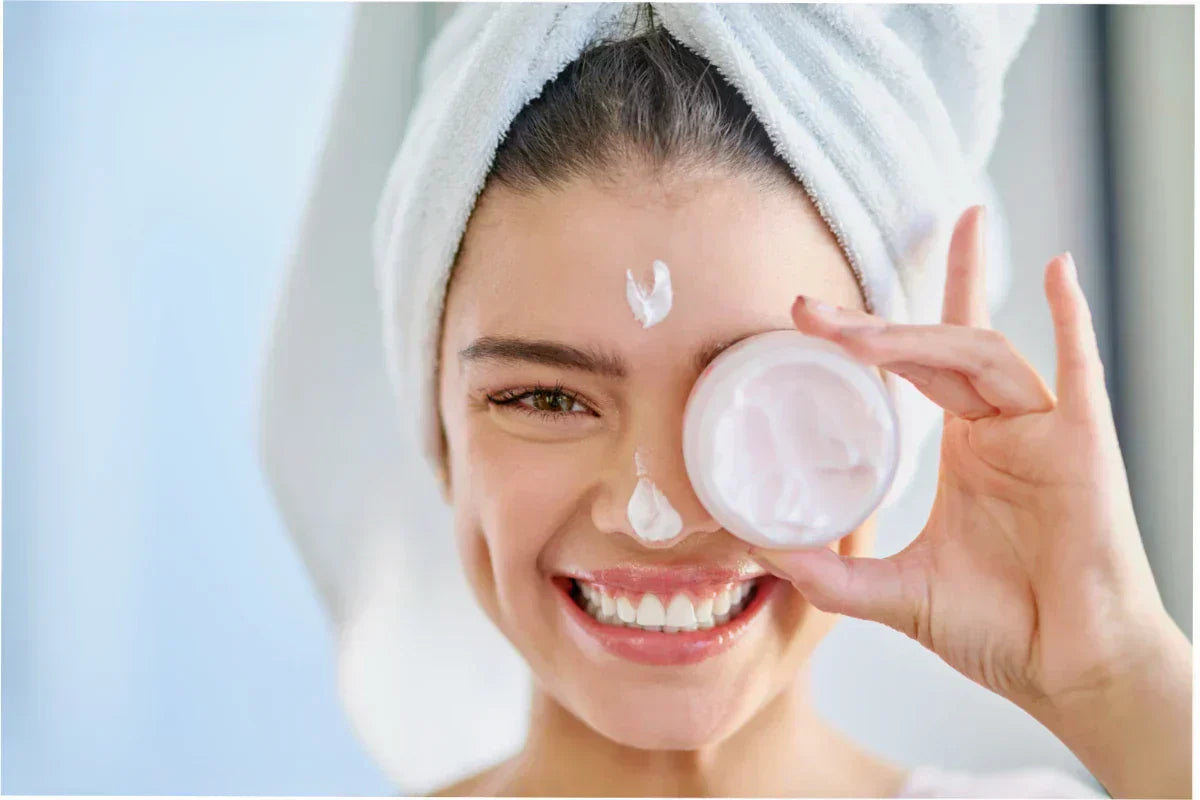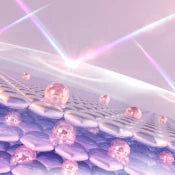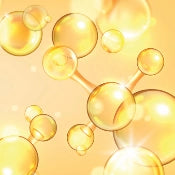When it comes to scientifically-proven skincare ingredients that deliver visible results, retinol cream stands in a category of its own among beauty products, but choosing the perfect formula for your unique skin requires understanding both its benefits and limitations. This comprehensive guide will walk you through everything you need to know about selecting and using the best retinol cream for your specific skin concerns, helping you identify the best retinol creams suited to your needs.
Introduction to Retinol
Retinol is a powerhouse ingredient that has earned its reputation as the gold standard in anti-aging skincare. Among various skin care products, retinol stands out for its proven ability to target multiple signs of aging. As a derivative of vitamin A, retinol belongs to a class of compounds called retinoids. It stimulates the production of collagen and hyaluronic acid, which helps improve fine lines and skin texture over time.
What sets retinol apart in your skincare routine is its versatility and its status as one of the key ingredients in effective skincare. The delicate skin around the eyes is often the first to show signs of aging, such as fine lines, wrinkles, and dark circles. Using a specialized retinol eye cream can effectively target these concerns while being gentle enough for this sensitive area.
The best retinol eye creams combine a gentle formula with active ingredients like retinol and soothing components such as hyaluronic acid and caffeine to reduce puffiness, smooth lines, and improve skin elasticity around the eyes. When selecting a retinol eye cream, opt for products specifically formulated for the eye area to minimize the risk of irritation. Applying a small amount with your ring finger, gently patting around the orbital bone, helps ensure the product is absorbed without causing discomfort.
Consistent use of a high-quality retinol eye cream can visibly reduce the appearance of fine lines and dark circles, complementing your overall retinol skincare routine for a more youthful, refreshed look. It helps reduce wrinkles, enlarged pores, and age spots, and improves skin texture by exfoliating the skin’s surface. Retinol is the strongest OTC retinol product available, but less potent than prescription retinoids, which are typically reserved for severe acne and other skin conditions.
Despite its impressive benefits, retinol isn’t without potential drawbacks. Side effects can include skin irritation and dryness, especially during the initial weeks of use. Choosing the best retinol night cream can help minimize these effects, as many night creams are formulated with soothing and hydrating ingredients that support skin recovery while you sleep, thereby reducing irritation and dryness, especially during the initial weeks of use. To minimize these irritating effects, it’s crucial to use retinol gradually, apply at night, and always wear sunscreen during the day to protect against increased sun sensitivity and damage.
Benefits of Retinol
The remarkable versatility of retinol makes it suitable for addressing multiple skin concerns simultaneously, from stubborn fine lines to persistent acne, improving skin texture, and uneven skin tone. Retinol can also improve tone for a more radiant complexion.
Reduction of Fine Lines and Wrinkles
Retinol helps reduce wrinkles and fine lines by boosting collagen production in the middle layer of skin. This increased collagen helps plump the skin from within, smoothing out the appearance of fine lines that form with age. The improvement becomes more noticeable with consistent use, as skin elasticity gradually increases.
Improved Skin Texture and Tone
One of retinol’s most appreciated benefits is its ability to improve skin texture and tone through gentle exfoliation. By acting on the skin's surface, retinol helps reveal fresher, smoother skin. Unlike surface-level exfoliants, retinol works deeper, accelerating skin cell turnover and helping your body shed dead skin cells more efficiently. This process reveals fresher, smoother skin and helps diminish the appearance of uneven skin tone.

Acne Treatment
For those struggling with acne-prone skin, which is a common skin condition that retinol can help address, retinol can be a game-changer. It works effectively to treat acne by regulating skin cell turnover, which helps unclog pores and prevent new breakouts. Additionally, retinol can help fade acne scars by promoting healthy cell regeneration and collagen production in affected areas. Beyond acne, topical retinoids are also known to help treat stretch marks, making them a versatile option for various skin concerns.
Diminished Hyperpigmentation
Retinol is highly effective at diminishing age spots and other signs of skin aging related to pigmentation. Sun spots, another common concern caused by sun damage, can also be reduced with retinol. By accelerating cell turnover, it helps lighten dark spots and even out patches of discoloration, resulting in a more uniform complexion over time.
Versatility Across Skin Types
Whether you’re dealing with aging skin, acne-prone skin, or uneven skin tone, retinol offers benefits tailored to your concerns. Its multi-faceted approach to skin improvement makes it one of the most valuable active ingredients in modern skincare.
How Retinol Works
Behind retinol’s impressive results lies a sophisticated biological process that transforms skin from the inside out. Understanding how retinol functions helps explain why it produces such remarkable improvements in skin appearance.
Retinol, a vitamin A-derived retinoid, penetrates the middle layer of skin (dermis) to neutralize free radicals and boost collagen and elastin production. This process goes far beyond surface-level treatments, affecting the fundamental structures that support youthful, healthy skin.
At the cellular level, retinol converts to retinoic acid once absorbed by the skin. This conversion allows it to communicate with skin cells, essentially “teaching” them to behave more like younger, healthier cells. The active ingredient binds to specific receptors in skin cells, triggering a cascade of beneficial processes.
Over-the-counter (OTC) retinol is the strongest OTC retinol product available, but less potent than prescription retinoids. Prescription retinoids are stronger vitamin A derivatives available only through a dermatologist, and are often used in skin care products to treat more severe skin conditions such as deep wrinkles, acne, and hyperpigmentation.
Because of their increased potency and risk of side effects, it is important to consult a dermatologist before using a prescription retinoid. Retinol increases skin cell turnover, helping to unclog pores and reduce the appearance of fine lines and wrinkles. This accelerated renewal brings fresh cells to the surface more quickly, while simultaneously encouraging the shedding of damaged, dull skin cells from the skin’s surface.
Additionally, retinol helps control sebum production, which further aids in clearing pores and reducing breakouts. The combined effect of increased collagen production and enhanced cell turnover gives skin a fresher, plumper appearance. As a topical treatment applied directly to the skin, retinol gradually transforms skin texture, tone, and resilience with consistent use.
Choosing the Right Retinol Product
The key to success with retinol isn’t simply choosing the strongest formula available; it’s finding the perfect balance of concentration, formulation, and complementary ingredients tailored to your unique skin needs. There is a wide variety of skin care products with retinol, each offering different textures, formulations, and benefits to suit various preferences and skin types.
Formulation Types
Consider your skin type when selecting between cream, gel, or serum formulations. Retinol creams are particularly suitable for dry or sensitive skin due to their moisturizing benefits. These formulations typically contain emollients that help buffer potential irritation while providing hydration. For combination skin or oilier complexions, lightweight formulas like gels or serums may be preferable. These formats tend to absorb quickly without clogging pores, making them ideal for those concerned about breakouts.
Concentration Levels
For beginners, starting with a lower concentration (around 0.25%) allows your skin to build tolerance gradually. As your skin adapts, you can slowly increase to moderate strengths (0.5%) and eventually to higher concentrations (1% and above) if needed and tolerated. Concentrations between 0.25% and 0.3% are particularly recommended for those new to retinol, as they provide a gentle introduction while still delivering noticeable benefits.
Remember that higher percentages don’t necessarily mean better results for everyone—finding the right retinol concentration for your specific skin concerns and sensitivity level is more important than simply seeking the strongest formula.
Complementary Ingredients
Look for hydrating and soothing ingredients, such as hyaluronic acid, niacinamide, or ceramides, that can help mitigate potential irritation. These supportive components can make a significant difference in how well your skin tolerates retinol. Some formulations combine retinol with other active ingredients, such as glycolic acid or salicylic acid, to enhance specific benefits. While these combinations can be effective, they may also increase the risk of irritation for sensitive skin types.
Alternatives for Sensitive Skin
If traditional retinol proves too irritating, consider a retinol alternative like bakuchiol, which offers similar benefits with less irritation potential. Encapsulated retinol is another option that delivers the active ingredient more gradually, potentially reducing irritating effects.
Skin Type Considerations
Your specific skin type plays a crucial role in determining which retinol cream will deliver the best results with minimal irritation.
Sensitive Skin
Those with sensitive skin require gentle, well-tolerated retinol creams like Drunk Elephant A-Passioni, which contains soothing ingredients to buffer potential irritation. The “sandwich method” can be beneficial, applying moisturizer before and after retinol helps buffer irritation and protect the skin; apply moisturizer, then retinol, followed by another layer of moisturizer to create a protective buffer.

Start with a very low concentration (0.01-0.03%) and use just once or twice weekly, gradually increasing frequency as your skin adapts. Be particularly attentive to how your skin responds, and don’t hesitate to scale back if you notice persistent redness or irritated skin.
Acne-Prone Skin
Acne-prone skin benefits from retinol products that contain salicylic acid or glycolic acid to help unclog pores more effectively. Look for oil-free or non-comedogenic formulations to avoid exacerbating breakouts. For active acne, introduce retinol slowly alongside your existing acne treatments, as the initial purging phase can temporarily worsen breakouts before improvement begins. The combination of retinol with these complementary ingredients can significantly improve both active acne and residual scarring.
Combination Skin
For combination skin, lightweight, balanced formulations are often the most effective. Consider applying a slightly richer retinol product to drier areas and a lighter formula to oilier zones, or choose an adaptable middle-ground product. Products with hyaluronic acid can be particularly beneficial for combination skin, as they provide moisture without heaviness or greasiness. This helps maintain balance across different facial zones with varying needs.
Dry Skin
Dry skin requires retinol creams with substantial moisturizing ingredients like shea butter, ceramides, or fatty acids. These formulations help counteract retinol’s potentially drying effects while supporting the skin barrier. Look for products that emphasize “hydrating,” “nourishing,” or “moisturizing” benefits alongside their retinol content. Applying these formulas to slightly damp skin can also help lock in additional moisture.
Aging Skin
Mature skin focusing on anti-aging benefits may tolerate and benefit from higher concentrations of retinol (0.5-1%) combined with peptides or additional antioxidants. These comprehensive formulations address multiple signs of aging simultaneously. Creams with a richer texture often provide the added benefit of immediate plumping and hydration while the retinol works over time to improve skin texture and reduce the appearance of fine lines and wrinkles.
Application and Usage
How you apply your retinol cream is just as important as which product you choose. Proper technique maximizes benefits while minimizing potential irritation.
When to Apply
Use retinol only at night, as sunlight degrades its effectiveness and can increase sun sensitivity. Nighttime application also aligns with your skin’s natural repair cycle, thereby enhancing the efficacy of the ingredients.
Allow your cleanser to dry completely before applying retinol—about 15-20 minutes is ideal. Damp skin can increase penetration and potentially cause more irritation, especially for beginners. Applying retinol 30 minutes after washing your face may further reduce the risk of irritation, providing an additional layer of protection for sensitive skin.
How to Apply
Start with about the size of a pea-sized amount for your entire face. This seemingly small amount is actually sufficient, and using more product won’t accelerate results; instead, it may increase irritation. Apply to clean, dry skin, gently dotting the product on your forehead, cheeks, and chin before smoothing it out with upward, outward motions.

Avoid the eye area, corners of the nose, and lips, as these areas are more sensitive to irritation. It is recommended to apply retinol after cleansing and drying your face to ensure optimal absorption and minimize irritation. For beginners or those with sensitive skin, the “sandwich method” can be helpful: apply moisturizer, wait for it to absorb, then apply retinol, followed by another layer of moisturizer to buffer potential irritation.
Frequency and Building Tolerance
Start with a once or twice weekly application, then gradually increase frequency as your skin adjusts. Some people may eventually use retinol nightly, while others find alternate-night application provides the best balance of results and comfort. For beginners, starting slowly with every other night or every third night is a practical approach to allow the skin to adapt without overwhelming it.
Expect some initial dryness or mild flaking as your skin adapts—this is normal and typically subsides as your skin builds tolerance. If irritation becomes uncomfortable or persists, reduce frequency temporarily before slowly building back up.
Essential Companion Products
Follow retinol application with moisturizer to buffer potential irritation and support skin barrier function. Products containing ceramides, peptides, or niacinamide can be particularly beneficial in this context. Perhaps most importantly, wear sunscreen with SPF 30+ daily when using retinol products. This step is non-negotiable, as retinol increases the skin’s sensitivity to UV damage. Choose a broad-spectrum formula and reapply throughout the day as needed.
Expert Advice
Two board-certified dermatologists shared their professional insights on maximizing results and avoiding pitfalls when incorporating retinol into your skincare routine.
Gradual Introduction
Dermatologists unanimously recommend the “low and slow” approach—starting with lower concentrations and infrequent application before gradually increasing as tolerance develops. This methodical introduction helps minimize the initial retinization period characterized by redness, dryness, and peeling.
“Many patients abandon retinol before seeing results because they experience irritation from starting too strong, too quickly,” explains one board-certified dermatologist. “Starting with a lower concentration twice weekly and slowly increasing frequency provides the best chance for long-term success.”
Setting Realistic Expectations
Experts emphasize that visible improvements from retinol typically require 8-12 weeks of consistent use, with more significant results developing over 6-12 months. This timeline reflects the gradual process of skin cell turnover and collagen production.
“Retinol is not an overnight miracle, but it’s the closest thing we have to it in dermatology,” notes a board-certified dermatologist. “Patients who commit to consistent use see transformative results, but it requires patience through the initial adaptation period.”
Sun Protection Guidance
Dermatologists stress the critical importance of sun protection when using retinol. Retinol users are more vulnerable to sun damage, which can lead to hyperpigmentation, dark spots, and skin discoloration, making protection crucial. They recommend daily application of broad-spectrum SPF 30+ sunscreen, even on cloudy days or during brief outdoor exposure.
Some experts suggest mineral sunscreens containing zinc oxide or titanium dioxide, as they may be less irritating for retinol-sensitized skin. Physical protection, such as wearing wide-brimmed hats and seeking shade during peak sun hours, provides additional defense against UV damage.
Seasonal Adjustments
Many dermatologists recommend adjusting your retinol routine seasonally. In winter months, when skin tends to be drier, reducing frequency or increasing moisturization can help maintain comfort. Conversely, some experts suggest reducing the frequency further during the summer months, given increased sun exposure.
“Listen to your skin and be willing to adapt your routine as needed,” advises one dermatologist. “Skin needs can change with seasons, stress levels, and age, so your retinol regimen should remain flexible.”
Common Concerns
Even the most effective skincare ingredients come with potential challenges—understanding common concerns about retinol can help you navigate your skin’s adjustment period successfully. Most users must apply retinol consistently, at least five times a week, to achieve optimal results and maintain their improvements over time.
Managing Irritation and Dryness
Skin irritation, dryness, and flaking represent the most frequently reported side effects of retinol use. These reactions typically occur during the initial weeks as skin adjusts to increased cell turnover.
To minimize these effects, start with lower concentrations and gradually increase frequency. Hydrating the skin adequately before and after retinol application can also reduce irritation. If excessive irritation occurs, temporarily reducing frequency or concentration may be necessary before gradually reintroducing the product.
Understanding Sun Sensitivity
Retinol increases skin cell turnover, resulting in newer, more vulnerable cells being exposed at the surface. This makes skin more susceptible to UV damage and potential sunburn. Daily application of broad-spectrum SPF 30+ sunscreen is essential when using retinol products, regardless of weather conditions or planned outdoor exposure. Some experts recommend additional physical protection, like wide-brimmed hats and seeking shade during peak sun hours.
Pregnancy and Breastfeeding Considerations
Medical professionals generally recommend avoiding retinol products during pregnancy and breastfeeding as a precautionary measure. While topical retinoids haven’t been conclusively proven to cause birth defects, their structural similarity to oral retinoids (which are known teratogens) warrants caution. Women should consult with their healthcare providers about safe skincare alternatives during these periods. Ingredients such as vitamin C, niacinamide, and peptides can offer similar benefits without potential concerns.
Product Interactions
Using retinol concurrently with certain active ingredients may increase the potential for irritation or reduce efficacy. Exfoliating acids (AHAs, BHAs), vitamin C, and benzoyl peroxide can all potentially interact negatively with retinol when used simultaneously. To avoid negative interactions, consider using these actives at different times for example, vitamin C in the morning and retinol at night, or alternating nights for different active ingredients. This approach maintains the benefits of each product while minimizing potential irritation.
Distinguishing Purging from Reactions
Some users experience temporary worsening of acne when starting retinol—a process called “purging.” This occurs because retinol accelerates the skin cell turnover process, bringing existing microcomedones to the surface more quickly.
True purging typically occurs in areas where breakouts normally appear and resolves within 4-6 weeks. If breakouts appear in unusual locations or persist for more than 6 weeks, the product may not be suitable for your skin type. A patch test before full-face application can help identify potential reactions.
Conclusion
Retinol stands as one of the most scientifically validated skincare ingredients available today, offering comprehensive benefits for multiple skin concerns. Through its ability to increase cell turnover, stimulate collagen production, and improve overall skin function, retinol can transform skin texture, tone, and appearance with consistent use.
The journey to finding your perfect retinol match requires understanding both the science behind this remarkable ingredient and your skin’s unique needs. By selecting an appropriate formulation based on your skin type, starting with a suitable concentration, and following proper application techniques, you can maximize benefits while minimizing potential irritation.
Remember that patience is essential when using retinol products. Visible improvements typically emerge after several weeks of consistent use, with more significant results developing over months of dedicated application. This timeline reflects the gradual nature of skin cell turnover and collagen production processes.
For those experiencing difficulties with traditional retinol formulations, alternatives such as bakuchiol or specialized, buffered retinol products may offer similar benefits with reduced irritation potential. These options expand access to retinoid-like benefits for those with particularly sensitive skin.
With the right retinol cream and application technique, you can harness this powerhouse ingredient’s ability to address multiple skin concerns simultaneously—from fine lines and wrinkles to acne and uneven skin tone. The key is finding the formula that works harmoniously with your unique skin to reveal its healthiest, most radiant potential.
Frequently Asked Questions (FAQ)
Which Retinol-based cosmetic ingredients does Flychem offer?
Flychem supplies top-tier Retinol products such as our specialized RetinAge™ (Retinol 50%), ideal for enhancing skincare formulations.
Can Flychem assist with the documentation needed for regulatory compliance for Retinol?
Yes, we provide comprehensive regulatory assistance, including COAs, TDSs, MSDSs, and related documents necessary for compliance and certifications.
Does Flychem require a minimum quantity for ordering Retinol ingredients?
No, Flychem maintains flexibility with no minimum order requirements. We can customize quantities to meet your formulation needs precisely.
How soon will Flychem dispatch an order for Retinol ingredients?
Orders for Retinol products are typically dispatched promptly within 24 to 48 hours, ensuring minimal disruption to your production timelines.
Can I order customized sample quantities for Retinol ingredients from Flychem?
Certainly! Flychem readily provides customized quantities and samples of Retinol ingredients to assist in your product evaluation and development.


